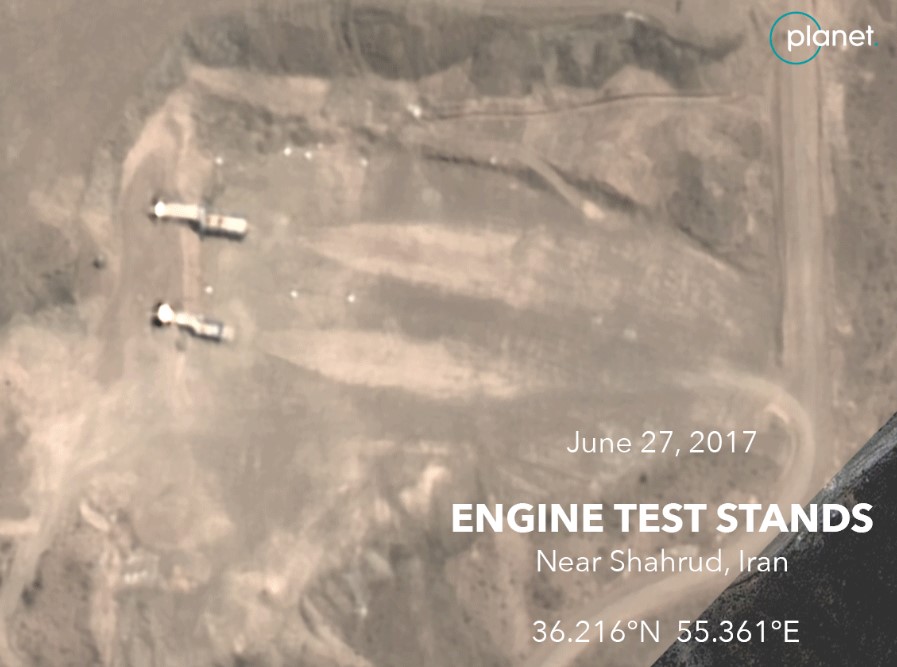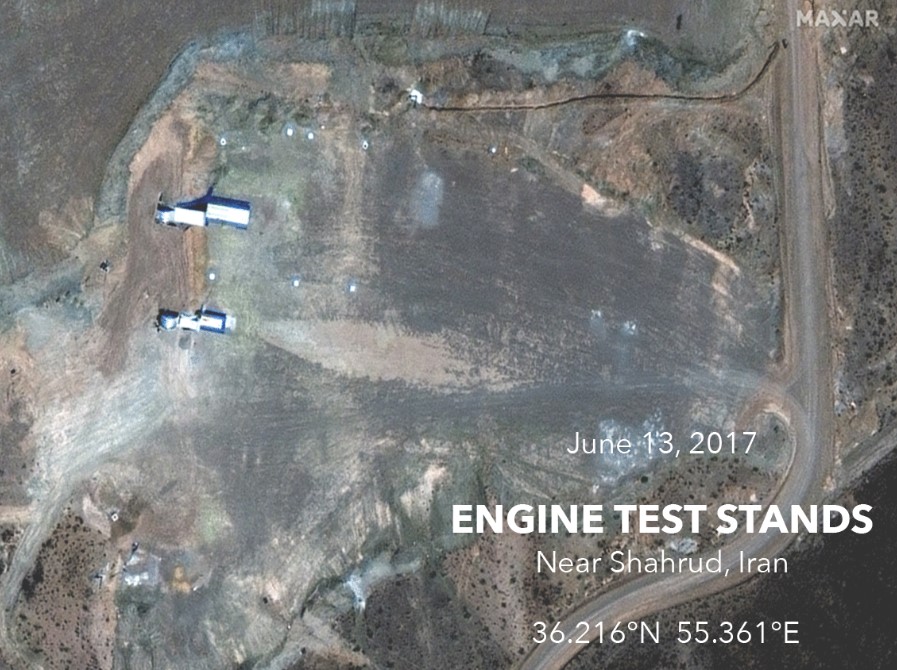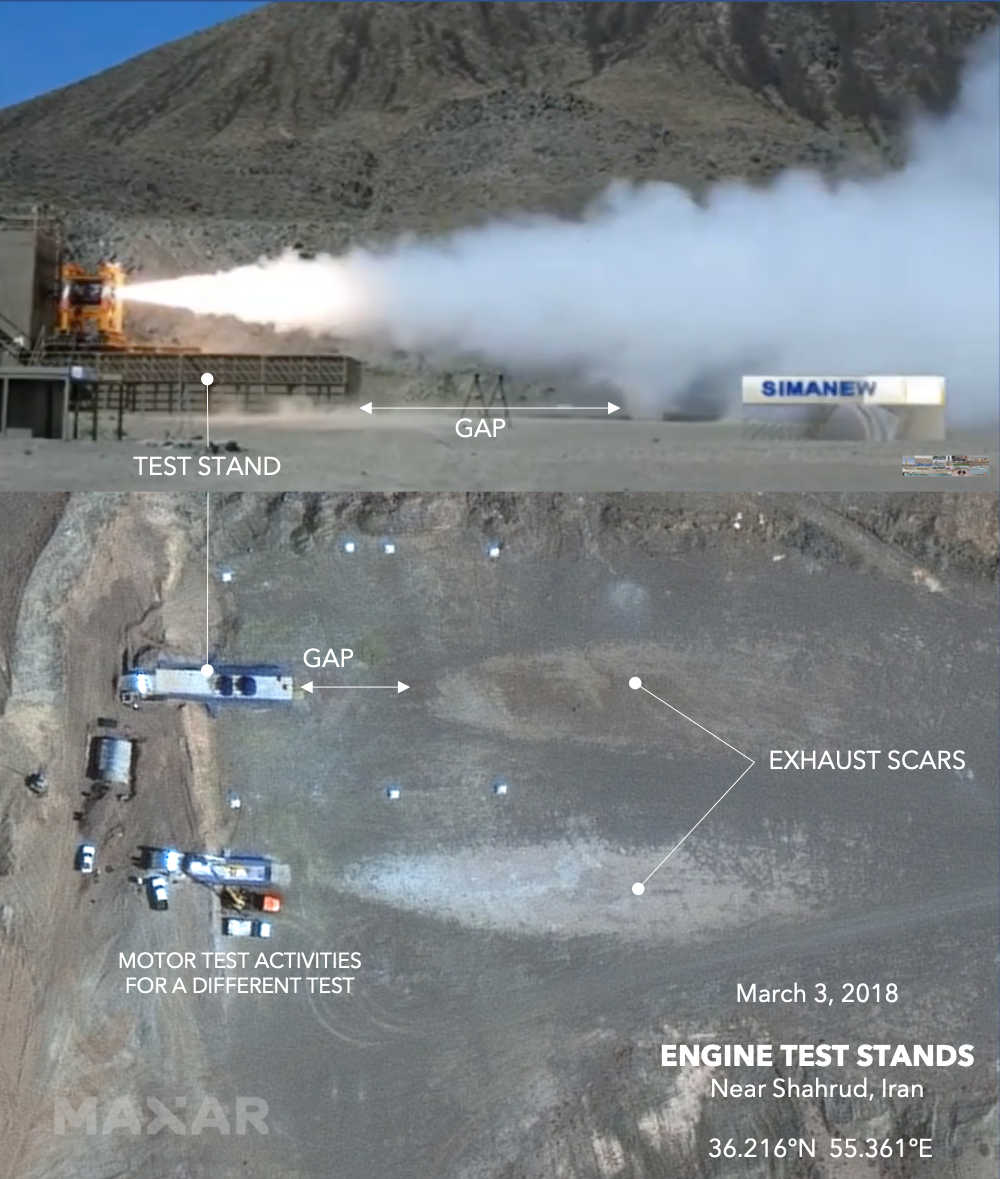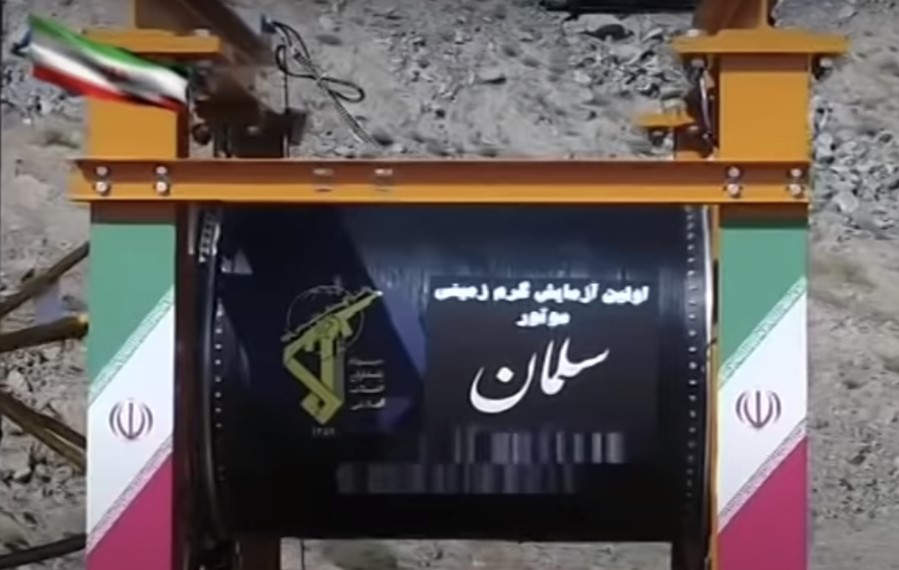
* The article was originally published on ONN's Datayo platform.
On April 22, Iran placed a small satellite in orbit. The space launch was notable for two reasons. First, the launch was conducted by Iran's Islamic Revolutionary Guards Corp (IRGC), not Iran's civilian space program. Second, the rocket used a new solid-propellant second stage (the Salman), which the IRGC publicly unveiled for the first time in February. Many outside observers were surprised, but my reaction was: What took so long?
Exclusive Video of Iran's Recent Satellite Launch With "Qased" SLV (Includes New Footage)
My colleagues and I at the James Martin Center for Nonproliferation Studies have been monitoring the IRGC's long-range solid propellant missile program for years. (One of those colleagues was an up-and-comer named Melissa Hanham, before she moved on to bigger and better things.) The IRGC began developing intermediate- and intercontinental-range solid-propellant ballistic missiles about twenty years ago. But after Iran's Supreme Leader imposed a 2,000 km range limit on Iran's missile programs sometime in the early 2000s, the IRGC recast its program to develop long-range solid-propellant missiles as a space launch program. And then, in 2011, an explosion wiped out almost the entire development team.
So, for several years, the effort seemed dormant. But we watched it come back to life in mid-2016. And we watched it do so from space.
Just prior to the 2006 explosion, the IRGC had begun building a new site for its space program - a facility near a place called Shahrud. And while others noticed it first, those analysts were puzzled by what they called a "space oddity". It was Fabian Hinz who was the person to understand what this place was. Fabian pieced together a number of details to identify the site as the home of an IRGC space effort that was separate from Iran's civilian space program. This site, which is home to the launch pad from where the Qased was launched on April 22, also contains buildings for casting solid rocket motors and five large concrete blocks that are test stands for conducting static tests of rocket motors.
These test stands are an essential source of information about Iran's solid-rocket programs. When Iran conducts an engine test from one of these stands, the exhaust often leaves a scar in the ground shaped like a candle flame. This allows us to note the frequency, and to a much lesser extent the size, of Iran's motor tests.
When Iran publicly unveiled the Salman rocket motor in February, it released a short video of one of these tests.
Iran Raad 500 ballistic missile Zohair composite engine, Space Salman composite engine TVC nozzle
This is the first video we have of an engine test at Shahrud. Fabian was able to quickly determine which of the five test stands had been used.
The curious thing about this particular concrete block is that it has been only used twice as far as we know - once in July 2017 and again in July 2019. Using satellite images from Maxar and Planet, we can narrow the times for those tests down quite precisely. A scar appeared between June 25-27, 2017, and then again between June 10-11, 2019. There is always the possibility that Iran conducted tests we don't know about either because the scar was too faint or because Iran wiped away the evidence. Iran has regraded the ground in front of the test stand at least once.


It seems very likely that the video is from one of the June tests. We can increase our confidence in that hypothesis by using the shadows in the video to estimate the position of the sun. Since we know where the site is and how the test stand is oriented, we know the sun is in the west, which means the video was shot in the afternoon. It's hard to determine the exact azimuth of the sun, but it is somewhere between 230-280 degrees. The sun is also pretty high in the sky - I made a couple of measurements from shadows in the video and estimate the altitude of the sun to be about 50-55 degrees. If you know the altitude and azimuth of the sun for a given latitude on the earth, you know the date and time.

Matching shadows, however, is extremely difficult in the best of circumstances. And this is hardly the best of circumstance. The video offers no clear shadows. These are very, very rough approximations that reduce a complicated three-dimensional scene to a pair of two-dimensional measurements. In this video, there isn't much to work with. The approximations are good enough to exclude other dates in March and October when we might have missed a test, but nowhere near good enough to tell the difference between June 10, 2017 and June 26, 2019.
So which June? One would expect Iran to have conducted multiple tests of the Salman motor before trusting it to put a payload in space. (Indeed, there seem to be subtle differences between the motor we saw being tested and the one on display, implying at least two tests.) And Salman tests have a strange signature. Because it is a tiny motor on a big test stand, there is a gap between the end of the test stand and the point on the ground where the exhaust comes down and leaves a mark. If one test leaves a mark like that and the other doesn't, we have our answer. Both tests on this stand, however, exhibit the same strange pattern. Both were probably for the Salman motor.

You might think knowing that both tests were probably for the motor would make it hard to tell them apart. But that's the final clue in the puzzle. Because there is a little sign on the motor in Farsi that reads: The first test of a Salman motor. That would suggest this video was taken in June 2017, but not released until February 2020. (My best guess is that the motor on display, however, was from a later test like June 2019.)

Why go through all this? Well, it is fun - or at least I think so. But more importantly, reconstructing Iran's testing pattern allows us to understand the developments we are seeing at Shahud. At the start of this post, I pointed out that my colleagues and I weren't surprised by the IRGC's launch of a rocket using a solid-propellant upper stage. We could see that this program had revived by late 2016 - and had been trying to tell people about it. After the June 2017 test, we did a more thorough examination of the site that culminated in a story in The New York Times about the possibility of a launch like the Qased in the next few years. "Like we did with North Korea," I told Max Fisher "we are underestimating how capable [the Iranians] are."
We may still be underestimating Iran and the IRGC. It is important to understand that just because something is new to us, that does not mean it is new to Iran. Our understanding of rocket motor developments in Iran probably lags by a few years. Iran is probably much closer than we think to testing a three-stage solid propellant space launch vehicle, something that (in contrast with Iran's liquid fueled space launchers) could also serve as an intermediate or intercontinental-range ballistic missile. The commander of the IRGC aerospace force indicated that Iran had only used a liquid-propellant first stage because it did not want to fly so many new systems in a single launch. That suggests Iran is working on a much larger solid-propellant first stage. So the IRGC may have yet more surprises in store - if we can call them that.